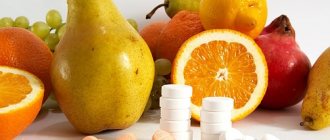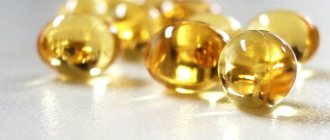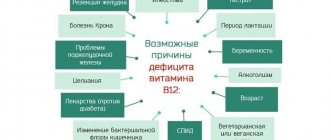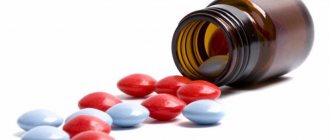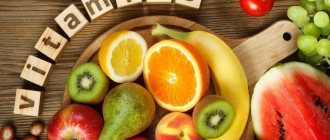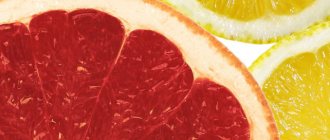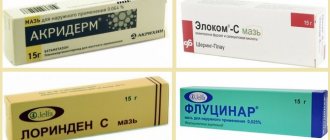General information
Vitamin K is a fat-soluble vitamin that combines a group of quinone structures, derivatives of 2-methyl-1,4-naphthoquinone, similar in chemical composition and functions in the human body. There are two main forms of vitamin K found in nature:
- vitamin K1 (phylloquinone, phytonadione) - synthesized in plants;
- vitamin K2 (menaquinones - a complex of structures that differ slightly in chemical structure, which are abbreviated as MK-x (where x is from 4 to 13) - is synthesized in the body of humans and animals.
The following compounds, also related to vitamin K, are obtained synthetically:
— vitamin K3 (2-methyl-1,4-naphthoquinone);
- vitamin K4 (2-methyl-1,4-naphthohydroquinone);
— vitamin K5 (2-methyl-4-amino-1-naphthohydroquinone);
- vitamin K6 (2-methyl-1,4-diaminonaphthoquinone);
- vitamin K7 (3-methyl-4-amino-1-naphthohydroquinone).
The main synthetic analogue of natural vitamin K is menadione or vitamin K3 - a water-soluble compound, a precursor of vitamin K2, so it is more correct to call it a provitamin.
Vitamin K is insoluble in water, soluble in fats and other organic solvents, destroyed by exposure to light, and resistant to oxygen and heat. The activity of the vitamin is reduced by exposure to radiation and X-rays, as well as by freezing.
The discovery of vitamin K occurred in 1929, when Danish biochemist Henrik Dam studied the effects of low cholesterol in chickens fed a synthetic diet. A few weeks after the start of the experiment, the chicks began to experience hemorrhages - hemorrhages in the digestive tract, subcutaneous tissue and muscles. Adding purified cholesterol to the diet did not eliminate the pathology. The mixture of cereals had a healing effect. The scientist suggested that the plants contain a certain compound that increases blood clotting.
The German journal, which was the first to report the results of the study, called the new substance coagulation vitamin (from the German koagulations - coagulation), which later, by analogy with other vitamins, was called vitamin K.
In 1939, vitamin K was first isolated from alfalfa in the laboratory of Swiss scientist Paul Karrer. At the same time, American biochemists under the leadership of Edward Doisy deciphered the chemical structure of the vitamin and obtained it from rotting fishmeal. Further study of the resulting substances showed that they have different structures, on the basis of which they were given the names vitamins K1 and K2. Later, Professor Doisy first synthesized artificial vitamin K, called vitamin 3.
Interesting facts about vitamin C
- It is preserved better in jam than in the freshest currants. To do this, you need to twist the jam, not cook it.
- The human embryo synthesizes ascorbic acid itself up to two months
- The smoke of 1 cigarette burns 20 mg of vitamin at once. Thus, smokers are at risk of scurvy.
- With a deficiency of vitamin C, intoxication occurs faster and lasts longer.
- People who consume ascorbic acid burn 30% more fat when performing various exercises.
In order for your child to grow up healthy, cheerful and with a good appetite, you must not forget to take vitamin C. Make sure you and your child meet the daily requirement.
Importance for the body
Functions of vitamin K:
- stimulates the synthesis of prothrombin, proconvertin and a number of other blood clotting factors in the liver, which promotes the formation of a blood clot and increases the stability of the vascular walls;
- participates in the synthesis of osteocalcin - a bone tissue protein on which calcium crystallizes, and the balance of osteoclasts - bone cells responsible for bone demineralization;
- prevents calcification of blood vessels and heart valves - protects arteries from blockage, thereby reducing the risk of cardiovascular diseases;
- takes part in maintaining the balance of adenosine triphosphate and creatine phosphate - universal sources of energy for all biochemical processes occurring in the body;
- is one of the components of the biological membrane of the cell and actively affects its structural and functional properties, which is manifested by the normalization of the motor activity of the stomach, intestines and skeletal muscles;
- necessary for the synthesis of sphingolipids, which are critical in the formation of the myelin sheath, which forms the outer sheath around nerves;
- protects cells, especially nerve cells, from oxidative damage;
- necessary for the prevention of inflammatory processes in the body that begin to appear with age - several markers of pro-inflammatory activity, including the release of interleukin-6 (IL-6), are significantly reduced if the body has enough vitamin K;
- neutralizes the effect of toxic substances entering the body (including coumarin, which enters the stomach from rotten or spoiled foods), thereby providing protection against cancer and other serious diseases.
Daily requirement for ascorbic acid
A person’s daily need for vitamin C depends on a number of reasons: age, gender, work performed, the physiological state of the body (pregnancy, breastfeeding, presence of disease), climatic conditions, and the presence of bad habits.
Illness, stress, fever and exposure to toxic substances (cigarette smoke, chemicals) increase the need for vitamin C.
In hot climates and in the Far North, the need for vitamin C increases by 30-50 percent. A young body absorbs vitamin C better than an older one, so in older people the need for vitamin C is slightly increased.
It has been proven that contraceptives (oral contraceptives) lower the level of vitamin C in the blood and increase the daily requirement for it.
The weighted average physiological requirement for the vitamin is 60-100 mg per day.
Table. Physiological requirements for vitamin C
| Category of the population of the Russian Federation | Age (years) | Vitamin C (mg) |
| Infants | 0-0.5 | 30 |
| 0,5-1 | 40 | |
| Children | 1-3 | 45 |
| 3-7 | 50 | |
| 7-11 | 60 | |
| Males | 11-14 | 70 |
| 15-18 | 90 | |
| Adults (18 and older) | 90 | |
| Females | 11-14 | 60 |
| 15-18 | 70 | |
| Adults (18 and older) | 90 | |
| During pregnancy | 100 | |
| During lactation | 120 |
Hypervitaminosis
With an excess of synthetic vitamin K, the following may occur:
- redness of the skin;
- increased sweating;
- allergic shock;
- hyperprothrombinemia, hyperthrombinemia, hyperbilirubinemia;
- toxicosis accompanied by convulsions (more often in children);
- jaundice and hemolytic anemia (in newborns, especially premature babies).
Natural vitamin K is not toxic and even large doses are quickly eliminated by the body. However, the upper tolerable intake level is set at 360 mcg per day.
When using vitamin K preparations, you must remember about its ability to increase blood clotting, which is unacceptable in case of thrombosis, embolism, varicose veins, thrombophlebitis, some types of migraines, as well as high cholesterol levels.
Recommended Dosages
What is the norm and how much it can be taken per day for colds and for their prevention: this largely depends on the form of the drug: tablets, injections or effervescent with glucose. Children love sweet “ascorbic acid” and often take it uncontrollably, which ultimately leads to an overdose of vitamin C.
Hypovitaminosis
To treat hypovitaminosis C, ascorbic acid is used in high concentrations. To achieve therapeutic goals, the dosage and rate of intake per day can be prescribed by a doctor within the range of 500-1500 mg per day.
Number of receptions
The daily intake of vitamin C should be divided into two or three doses. This will allow the required amounts of vitamin to be supplied to the body evenly throughout the day. Otherwise, it is quickly distributed, and the excess is excreted in the urine, so it will be very difficult to cope with hypovitaminosis, and the required norm will be violated.
How to take ascorbic acid in effervescent tablets? How much per day can you give your child? This is another form of release of this drug. The tablet must be dissolved in a glass of water at room temperature and drunk. There is no need to chew, swallow, or dissolve. In hot water, the vitamin is destroyed. The dose recommended for children is in the description of the drug.
Many people are concerned about the question of how many ascorbic acids can be eaten per day? This depends on the dose of vitamin in one tablet, which can be found on the package. Typically these tablets come in 250, 500 and 1000 mg strengths. The total dose during treatment should not exceed 1500 mg. If there are no manifestations of deficiency, then it is not recommended to eat more than one 250 mg tablet per day.
Diagnostics
Early signs of hypovitaminosis K:
- reduced prothrombin content in the blood - hypoprothrombinemia below 30-35%, deficiency of plasma factors VII, IX and X (when the prothrombin content decreases to 35%, there is a danger of hemorrhage in injuries; when the prothrombin content decreases to 15-20%, severe bleeding may develop) ;
- prothrombin time is increased by 25% - with the exclusion of other pathologies (liver damage, therapy with anticoagulants or salicylates, other diseases accompanied by bleeding: scurvy, allergic purpura, leukemia, thrombocytopenia).
Signs of Vitamin C Deficiency
A deficiency of ascorbic acid manifests itself quite quickly:
- Painful face.
- Complicated and long-term illnesses.
- Bone pain when moving.
- Depressive notes in behavior.
- Memory impairment.
- Bleeding gums.
- Decreased appetite.
- Anemia/anaemia.
- Dry skin.
- Arrhythmia.
- Reduced weight.
- Possible swelling of the joints.
- Children may be developmentally delayed.
Diagnostics:
- visual inspection;
- collecting complaints and analyzing them;
- blood chemistry.
Antivitamins
Currently, two main antivitamins to vitamin K are known:
- heparin is a natural anticoagulant - a heteropolysaccharide produced in the tissues of the liver and lungs, which delays the process of converting prothrombin into thrombin, which helps slow down the blood clotting process;
— dicoumarin is an indirect anticoagulant, discovered in the early 20s of the 20th century during an outbreak of a previously unregistered cow disease in the northern territories of the USA and Canada. During minor surgical interventions and sometimes spontaneously, animals died from blood loss. After determining that the cows were eating moldy sweet clover silage, scientists found that it causes a deficiency of prothrombin complex factors. The toxic substance isolated from the decaying plant was called dicumarol, which soon became the ancestor of a large number of derivatives that cause an anticoagulant effect due to an antagonistic interaction with vitamin K.
Natural Sources of Vitamin C
- Animals:
Milk: mare, goat, cow.
- Vegetable
Vegetables : leafy greens, broccoli, cabbage (white cabbage, Brussels sprouts, cauliflower), bell pepper, tomato, potato, eggplant, zucchini, onion, carrot, radish, radish;
Fruits : apples, apricots, persimmons, bananas, grapes, oranges, tangerines, lemons;
Berries: strawberries, rowan, rose hips, lingonberries, raspberries, currants (red, black), blueberries, watermelon.
You can buy it separately in pharmacies in the form of drops, tablets, dragees, and powder. And also in a vitamin complex.
Helpful Interaction
Vitamin K combines well with the following:
- vitamin D - these vitamins are considered highly synergistic, since both interact with proteins involved in calcification of bones and tissues. If increased vitamin D intake is required, co-administration of vitamin K in the form of MK-4 is recommended.
— vitamin B2 — necessary for the transition of vitamin K to its active form;
- anticoagulants - in some cases, the combination of the correct dosage of drugs can prevent excessive blood thinning and improve the patient's stability during therapy.
Harmful interaction
Vitamin K should be used cautiously with the following substances:
- calcium and phosphorus - to achieve optimal absorption of these substances, it is necessary not to exceed their ratio of 2:1; disruption of this balance affects the synthesis and absorption of vitamin K, which can cause internal bleeding;
- vitamin E - large dosages can reduce the absorption of vitamin K from the gastrointestinal tract and affect normal blood clotting;
- antibiotics and sulfonamide drugs - can inhibit the intestinal microflora that synthesizes the vitamin;
- anticoagulants - treatment of cardiovascular diseases with blood-thinning drugs - one of the main causes of hypovitaminosis K;
- xenical, cholestramine, gastal - reduce and slow down the absorption of the vitamin;
- cancer chemotherapy - kills the intestinal microflora that synthesizes the vitamin;
- synthetic food additives (flavors, preservatives, dyes) - destroy the healthy intestinal microflora that synthesizes the vitamin;
- fizzy and alcoholic drinks - help remove the vitamin from the body.
Overdose of vitamin C
Manifests:
- diarrhea;
- damage to tooth enamel;
- stomach irritation;
- worsening problems with diabetes;
- addiction in pregnant women;
- deterioration in the absorption of B vitamins.
Consequences of overdose
Most often found:
- sleep disturbance;
- anxiety;
- headache;
- increased blood pressure;
- blood thickening;
- if consumed excessively, even termination of pregnancy.
Drugs
Vikasol (Russia).
Indications for use: jaundice due to a delay in the flow of bile into the intestines, acute hepatitis (inflammation of liver tissue); parenchymal (from internal organs) and capillary bleeding (used in preparation for and after surgical operations), bleeding from ulcers of the stomach and duodenum; radiation sickness; thrombopenic purpura (multiple hemorrhages under the skin and/or mucous membranes due to a decrease in the level of platelets in the blood); persistent hemorrhoids (from dilated veins of the rectum) and nosebleeds; the last months of pregnancy (to prevent bleeding in newborns; hemorrhagic disease (increased bleeding) in newborns; prolonged uterine juvenile and premenopausal bleeding (dysfunctional uterine bleeding before puberty and in the premenopausal period); bleeding due to pulmonary tuberculosis, septic diseases (diseases associated with the presence of microbes in the blood), severe hypoprothrombinemia (decreased levels of prothrombin in the blood - a blood clotting factor), when using anticoagulants (drugs that inhibit blood clotting) - antagonists (drugs with the opposite effect) of vitamin K: phenylin, neodicoumarin and others.
Konakion Phytomenadion (Switzerland).
Prescribed for hemorrhagic syndrome (increased bleeding) with hypoprothrombinemia (decreased levels of prothrombin in the blood - a blood clotting factor) caused by liver dysfunction (hepatitis, cirrhosis) and certain diseases of the gastrointestinal tract (peptic ulcer, colitis and others). In addition, the drug is used for hemorrhages (bleeding) associated with the use (overdose, individual hypersensitivity) of indirectly acting anticoagulants (drugs that inhibit blood clotting) and some other drugs (antibiotics, salicylates, sulfonamides, tranquilizers). Also prescribed before major operations to reduce bleeding.
Lack against the background of excess
There are two ways to develop ascorbic acid deficiency. Symptoms of this condition do not appear immediately, but after some time, when the deficiency becomes clinically pronounced. The first way is implemented when there is insufficient intake of vitamin C in the body. Most often this is due to the lack of fresh vegetables and fruits in the diet. The second way is a disruption of the processes of ascorbic acid absorption, during which it is destroyed.
Most often this is due to the following pathological processes:
- Pancreatitis
- Enteritis
- Colitis
- Gallstone disease and others.
The intake of large doses of ascorbic acid into the body in a short period of time leads to the activation of its elimination systems. As a result, this can lead to hypovitaminosis. Clinical signs of deficiency include the following:
- Increased bleeding from the gums
- Losing teeth due to weakened gums
- Rapid appearance of hematomas (bruises) even against the background of minimal mechanical impact
- Poor wound healing ability of tissues
- General weakness
- Indifference to what is happening
- Increased hair loss
- Dry and flaky hair
- Irritability over small things
- Frequent colds
- Joint pain
- Bad mood
- Uncomfortable sensations.
Vitamin C is available in fresh vegetables and fruits. Eating greens will help you avoid hypovitaminosis. It is worth remembering that the “ascorbic acid” in these same products is destroyed by temperature, so cooking the dishes is not recommended. Boiling vegetables leads to the destruction of more than 50% of vitamin C. And even short boiling destroys ascorbic acid, disrupting the process of its subsequent absorption.




